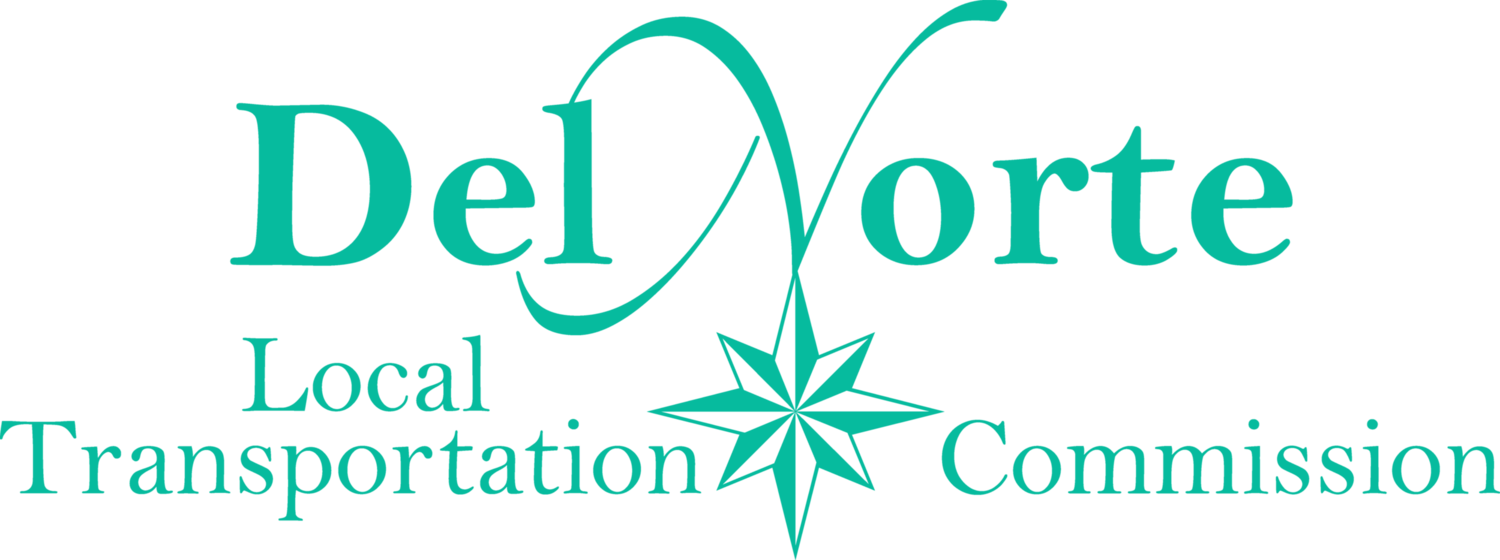Current Projects
Active Transportation Plan
The goal of this plan is to prepare the City of Crescent City, the County of Del Norte, Native American Tribes and other local government entities for the various types of funding included as part of the Active Transportation Program. The plan will be developed to meet the requirements set forth by the California Transportation Commission in the ATP Guidelines on behalf of the Del Norte Local Transportation Commission. The work for the Active Transportation Program Plan will include:
- An Americans with Disabilities Act (ADA) Transition Plan for Transportation Infrastructure chapter, including clearly delineated sub-chapters for the following jurisdictions: City of Crescent City, County of Del Norte, Redwood Coast Transit Authority (paratransit).
- A Regional Pedestrian Plan chapter identifying and prioritizing pedestrian needs in the Del Norte region including recreational trails.
- A Bicycle Facilities chapter that updates the 2007 Bicycle Facilities Plan information and that focuses on new route priorities given the competitive requirements of the Active Transportation Program.
- A Safe Routes to School chapter that will utilize the 2013 School Zone Infrastructure Audit and that will include one-mile but focus on half-mile zones from schools.
- Other applicable plans for ATP-eligible projects that would put partner agencies and governments in a position to obtain ATP funding.
- A chapter defining performance measures and the top ten (or fewer) priority unfunded projects that addresses Active Transportation Program.
The Active Transportation Plan is expected to be developed by June 30, 2015. Project updates will be posted when available.
Climate Change and Stormwater Management Plan
Exacerbating the current risks to transportation infrastructure, Climate Change will put even greater stressors on system reliability and mobility. According to the State, the reality of a changing climate means that transportation planning agencies need to understand the potential effects of changes in storm activity, sea levels, temperature, and precipitation patterns, and then develop strategies to ensure the continuing robustness and resilience of transportation infrastructure and services. Along with current risks, future risks to transportation infrastructure will be addressed.
The goal of the plan and eventual implementation is to increase system reliability and mobility by reducing the impacts of flooding on transportation infrastructure and transit services. Transportation planning will help the region to better understand ways in which flooding can be controlled and can encourage the implementation of projects that will lessen the degree of flooding.
This plan is scheduled to be developed by December 30, 2015. Project updates will be posted when available.
Highway 197/199 Caltrans Safe STAA Access
The California Department of Transportation (Caltrans) has proposed improvements to Routes 197 and 199 in Del Norte County to allow larger, industry standard-sized trucks access to the North Coast from the east. These projects propose adjustments to Route 197 near Ruby Van Deventer County Park (Ruby 1 and Ruby 2) and on Route 199 near the Narrows, at Washington Curve, and in the Patrick Creek area. These projects will remove existing restrictions to Surface Transportation Assistance Act (STAA) trucks, now considered the industry standard. Refer to the links below for more information. The first link is to the regularly updated Caltrans blog for this project.
197/199 Safe STAA Access Project News (blog) Caltrans District 1 - 197/199 Safe STAA Access
Safe Routes to School
The DNLTC in cooperation with the California Center for Rural Policy under contract with the DNLTC prepared the Del Norte County Safe Routes to Schools Policy Report-2013-13. This report assesses travel to and from school among a sample of six school campuses in the County. The report provides baseline information and policy recommendations for Safe Routes to School projects in the County.
In addition to the Policy Report, the DNLTC developed a School Zone Infrastructure Audit and Circulation Study. This study includes a detailed look of automobile circulation patterns and pedestrian behavior around 11 school campuses. Projects recommended in this report are discussed at the local (County and City) and at the regional level at the Technical Advisory Committee meetings. Projects are typically discussed during grant application cycles and regular funding programming cycles. You can find the complete reports here.
Front Street
The City of Crescent City has plans to improve Front Street, including new monument signing, a roundabout, diagonal parking, an archway, a landscaped median, level sidewalks with street trees, and informational signs. The $4 million project will not only improve the roadway surface and traffic circulation, but improve the walkability and bring economic activity to the waterfront area. The project has a portion of the funding available through local transportation funds and will be seeking the rest through competitive statewide and federal grants.
US Highway 101 Traffic Calming and Gateway Study 2010
US Highway 101 runs through the central portion of Crescent City’s downtown area and poses many challenges to travels and planners. The proposed project would include improvements to pedestrian facilities, addition of trails, addition of crosswalks and crosswalk signalization, raised medians, landscaping, art, and gateway signage.
The US Highway 101 Traffic Calming and Gateway Study addresses the following goals:
- Improve traffic safety and pedestrian/bicycle safety along the key highway entrances to the Crescent City urban area.
- Calm traffic flow to improve the urban quality of the entrance areas.
- Enhance the local economy by improving the attractiveness of Crescent City to visiting motorists as a place to stay and enjoy.
The study corridor includes US Highway 101 from Sand Mine Road northward to the downtown Crescent City “grid” at Front Street, as well as from the Washington Boulevard interchange on the north, southward to Cooper Avenue. This project was followed by a complete Project Study Report developed by Caltrans in 2012.
